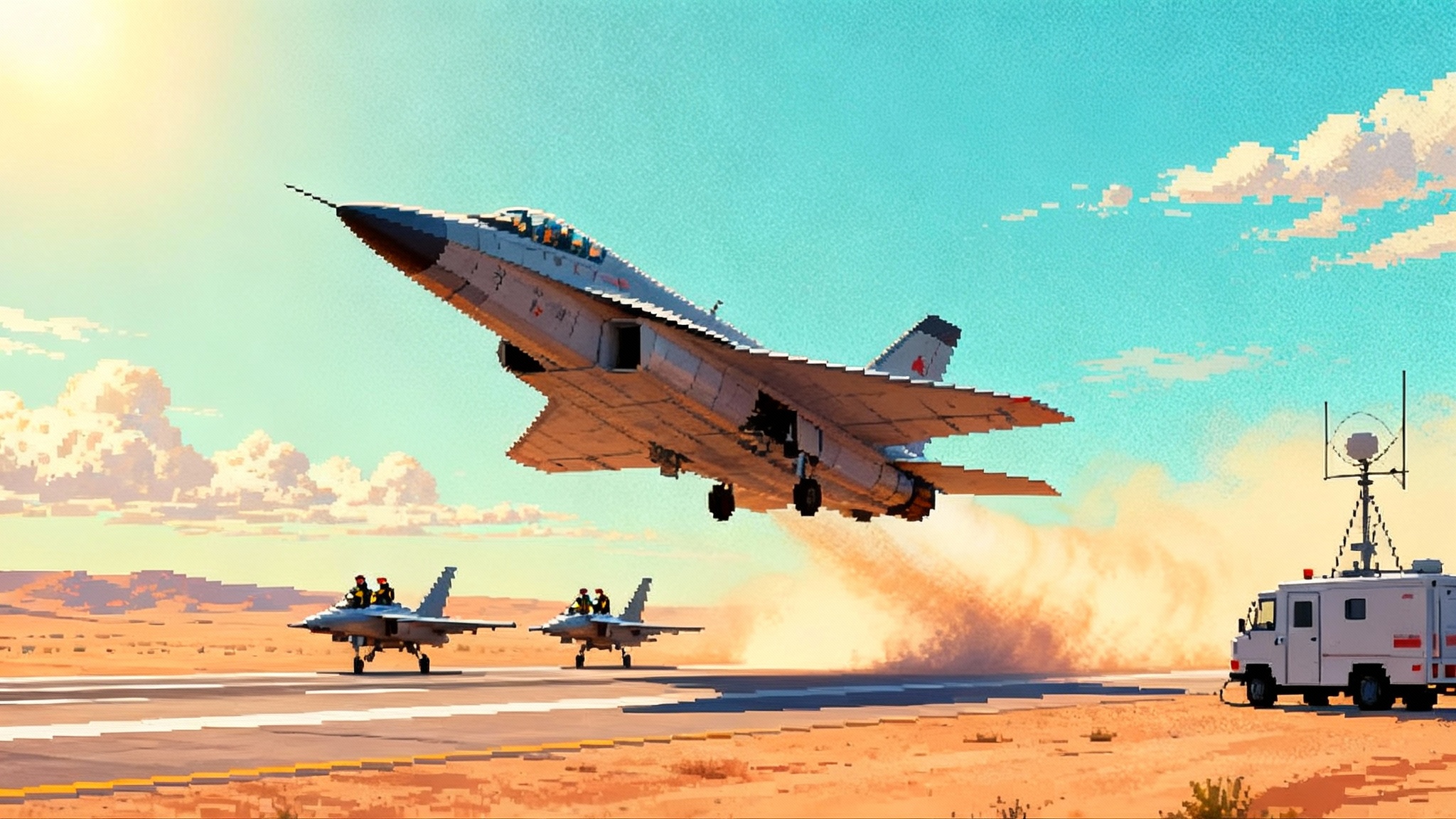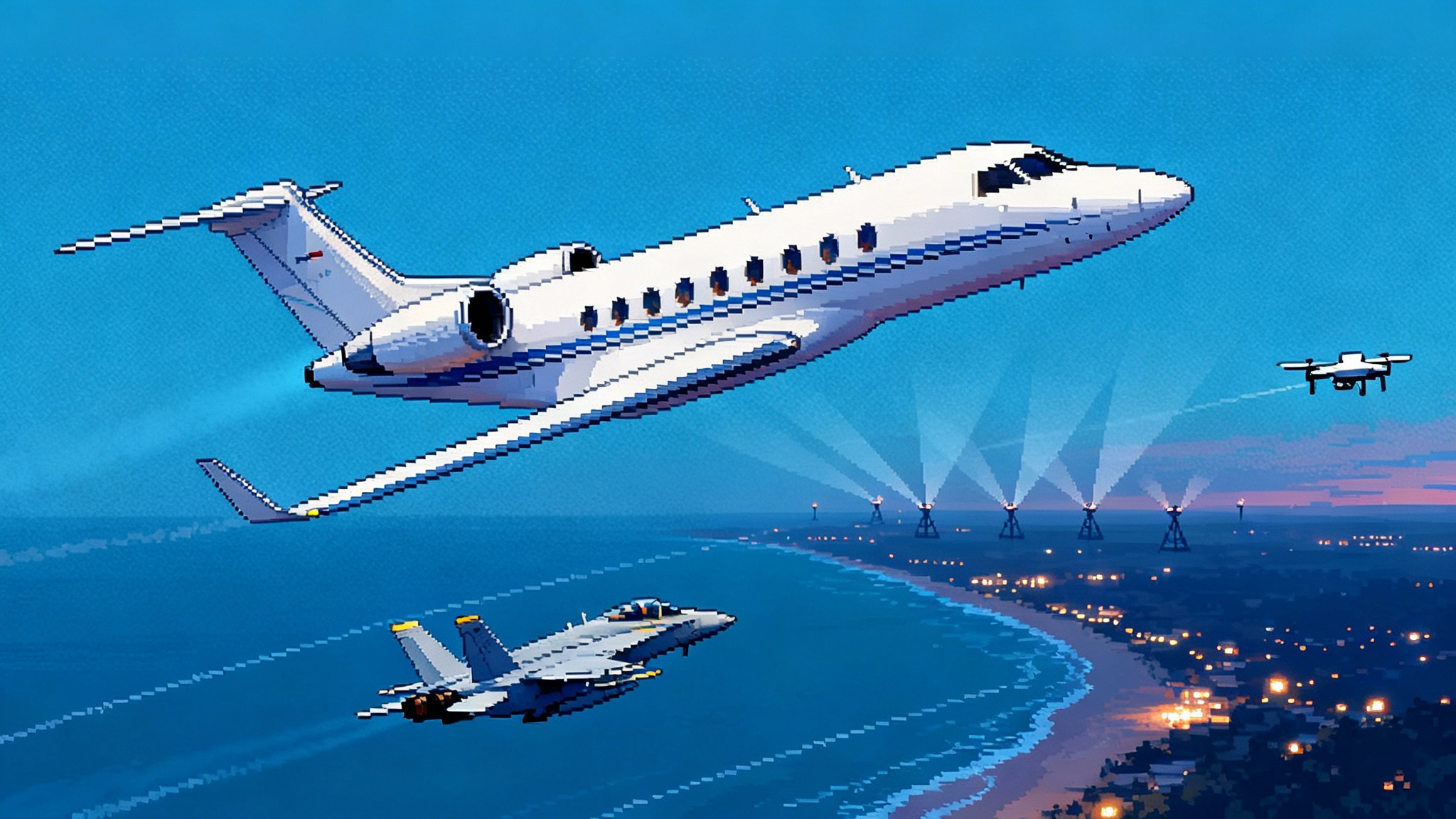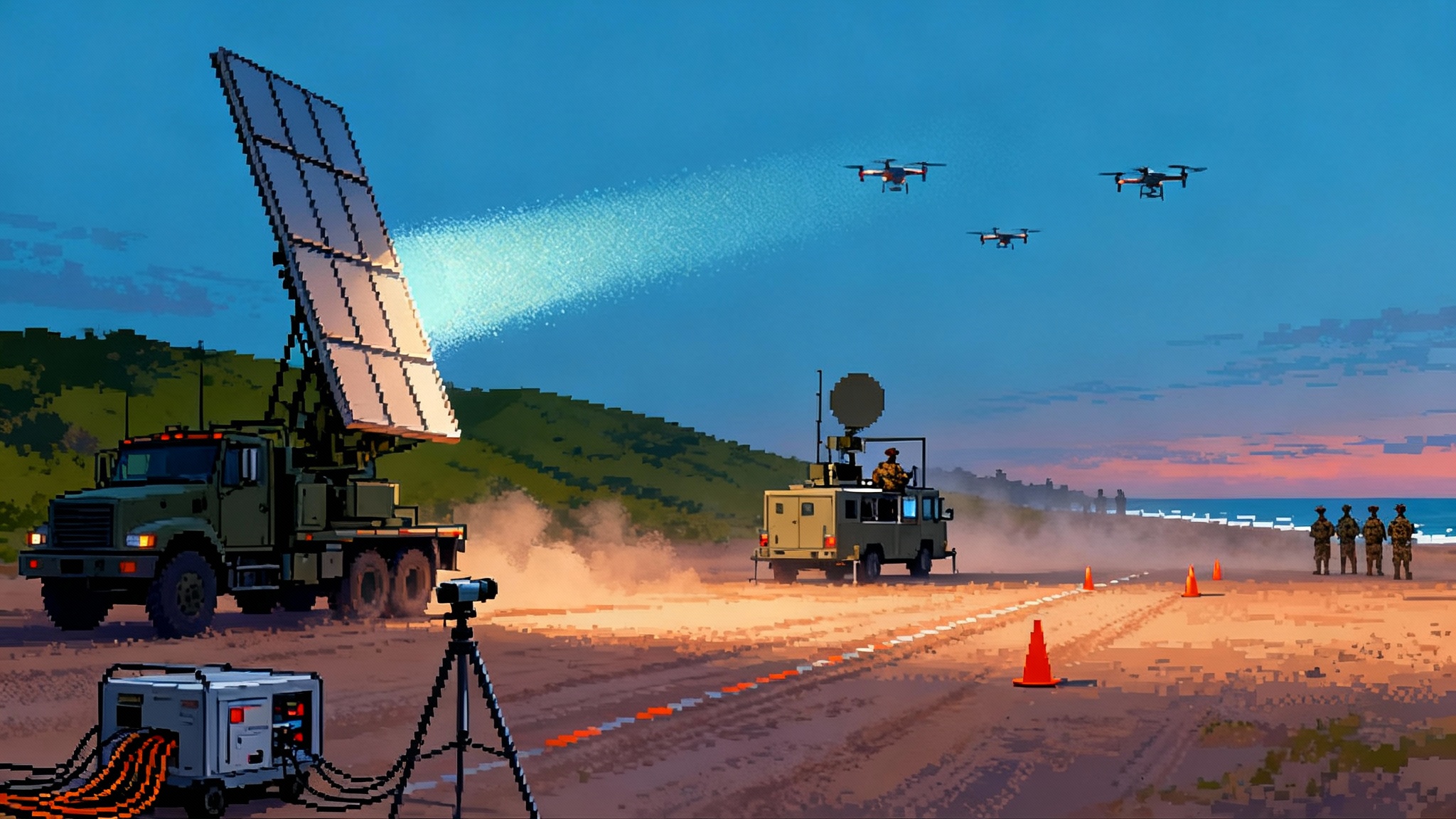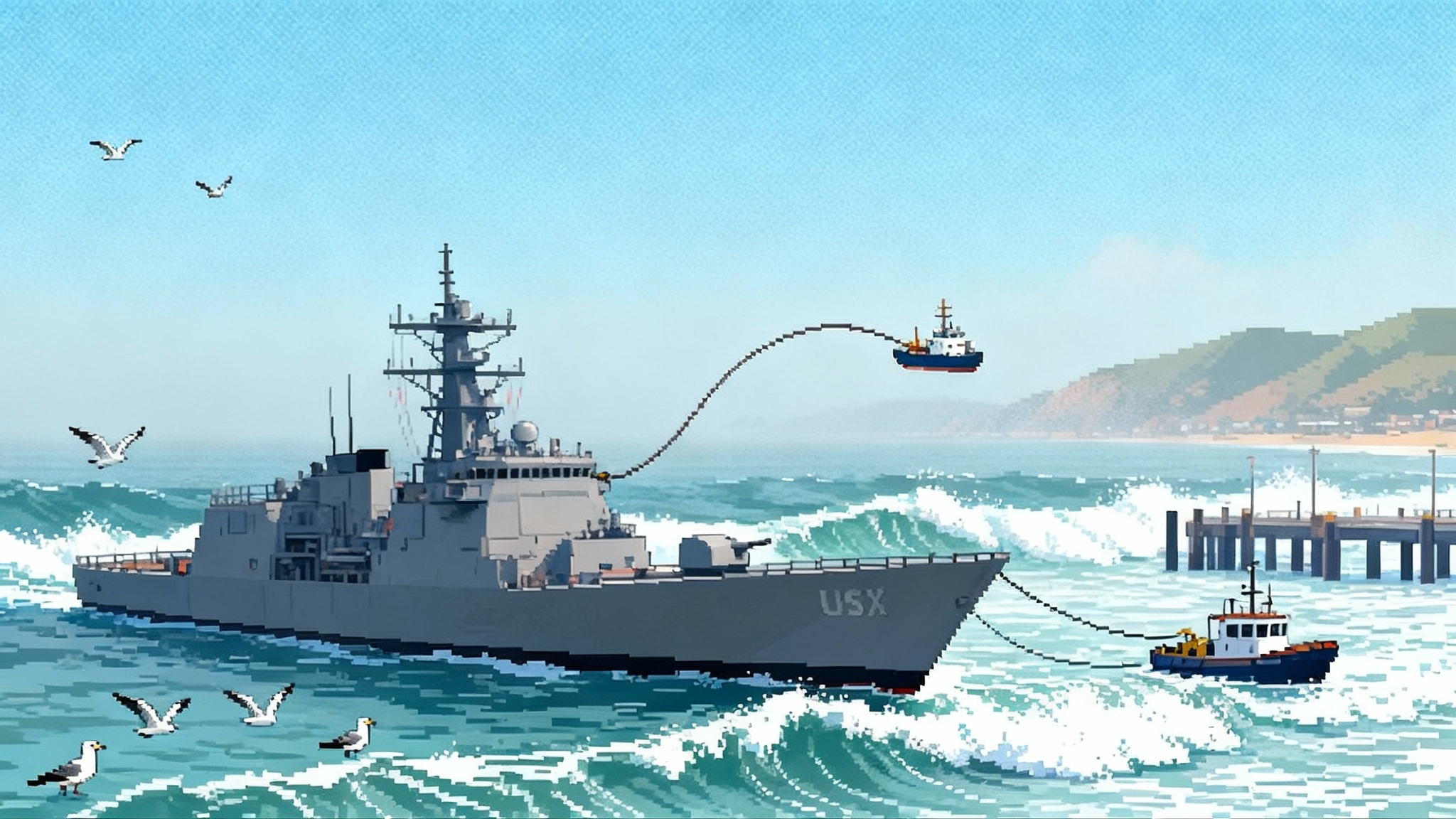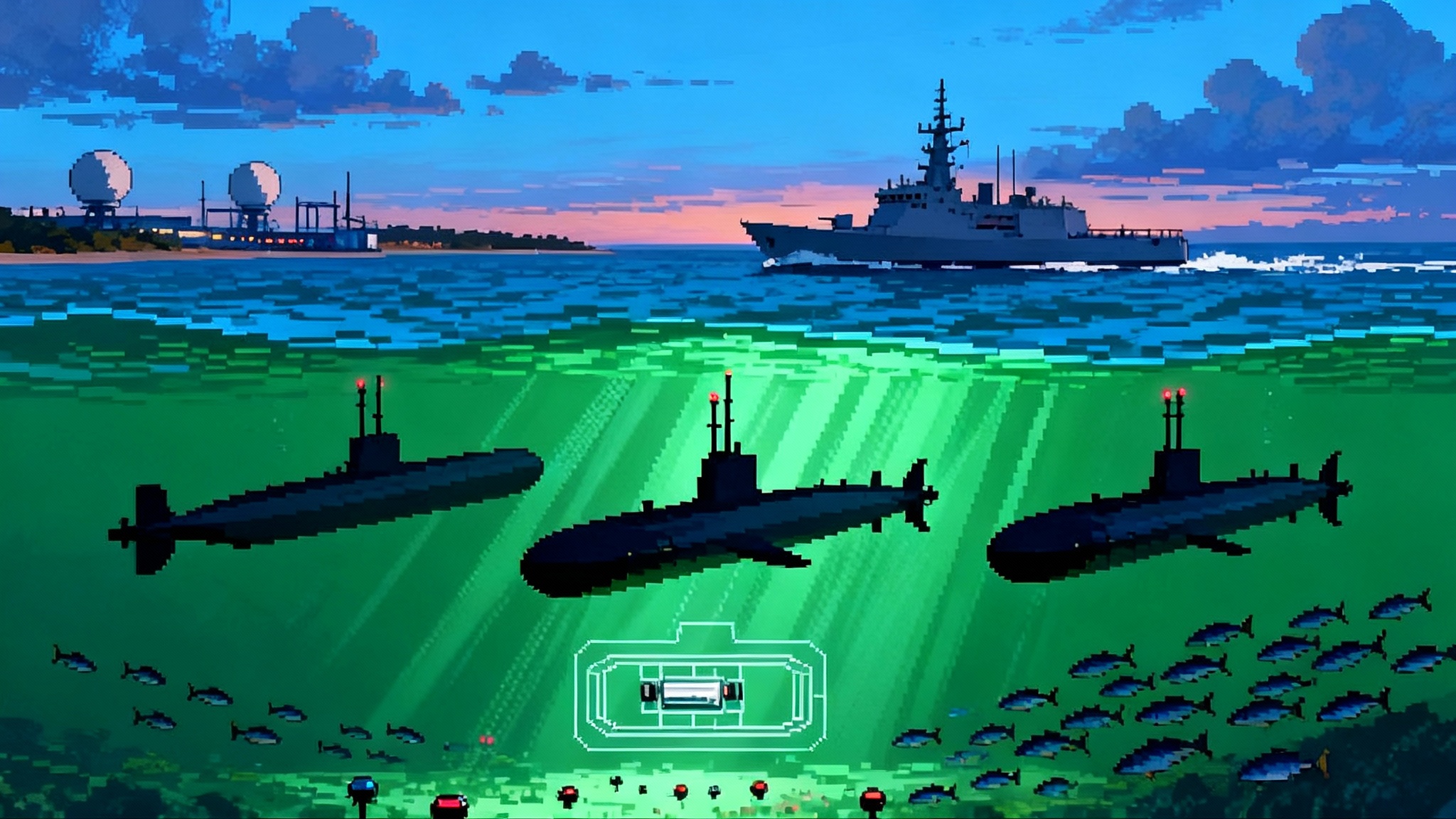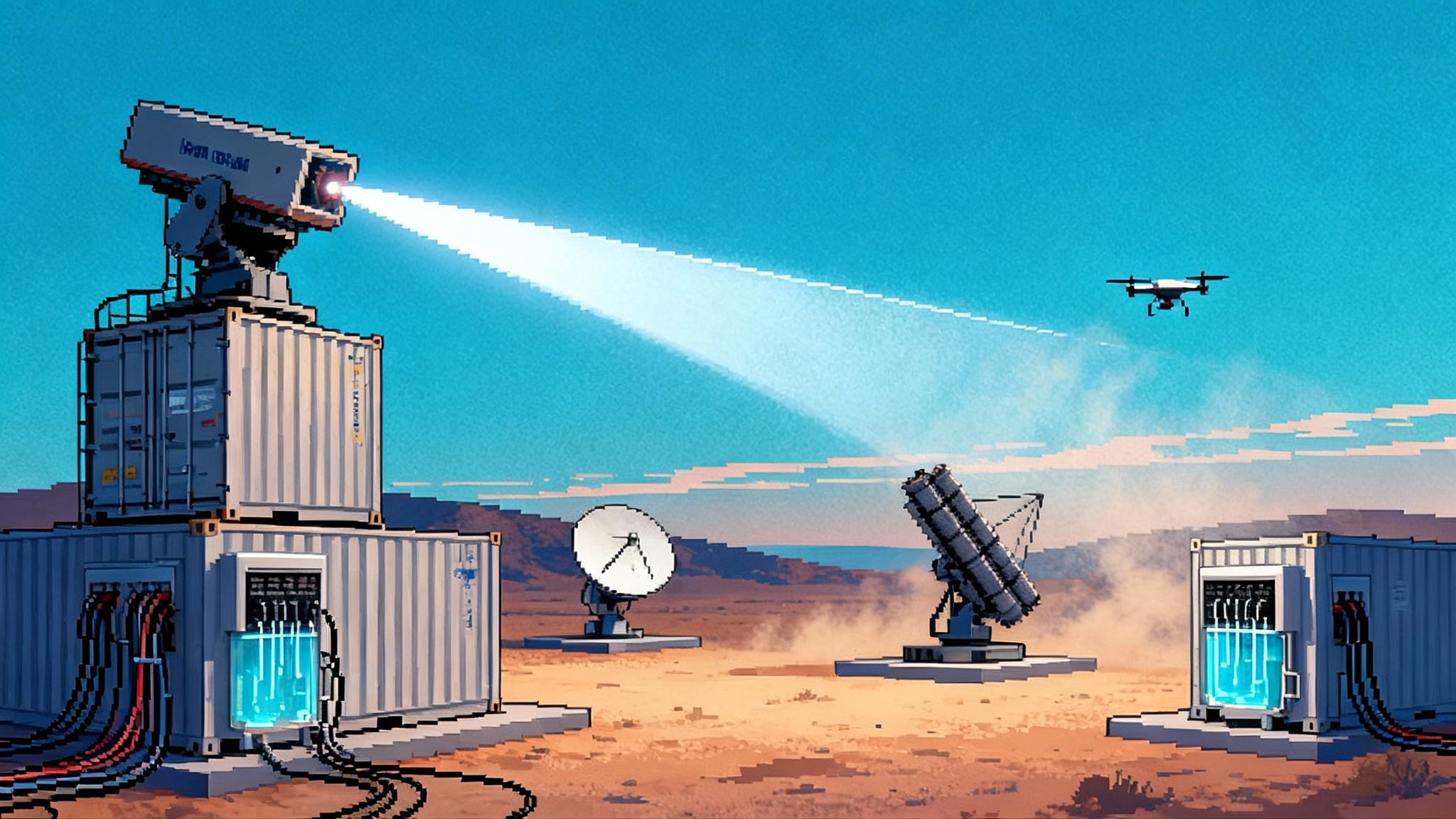Quantum PNT Breaks Out as DIU and DARPA Make GPS-Proof Nav Real
This summer and fall, DIU awards and DARPA’s new RoQS program pushed quantum inertial sensors and magnetic navigation out of the lab and onto flight lines. Here is what is real now, the hard parts left, and what to watch next.
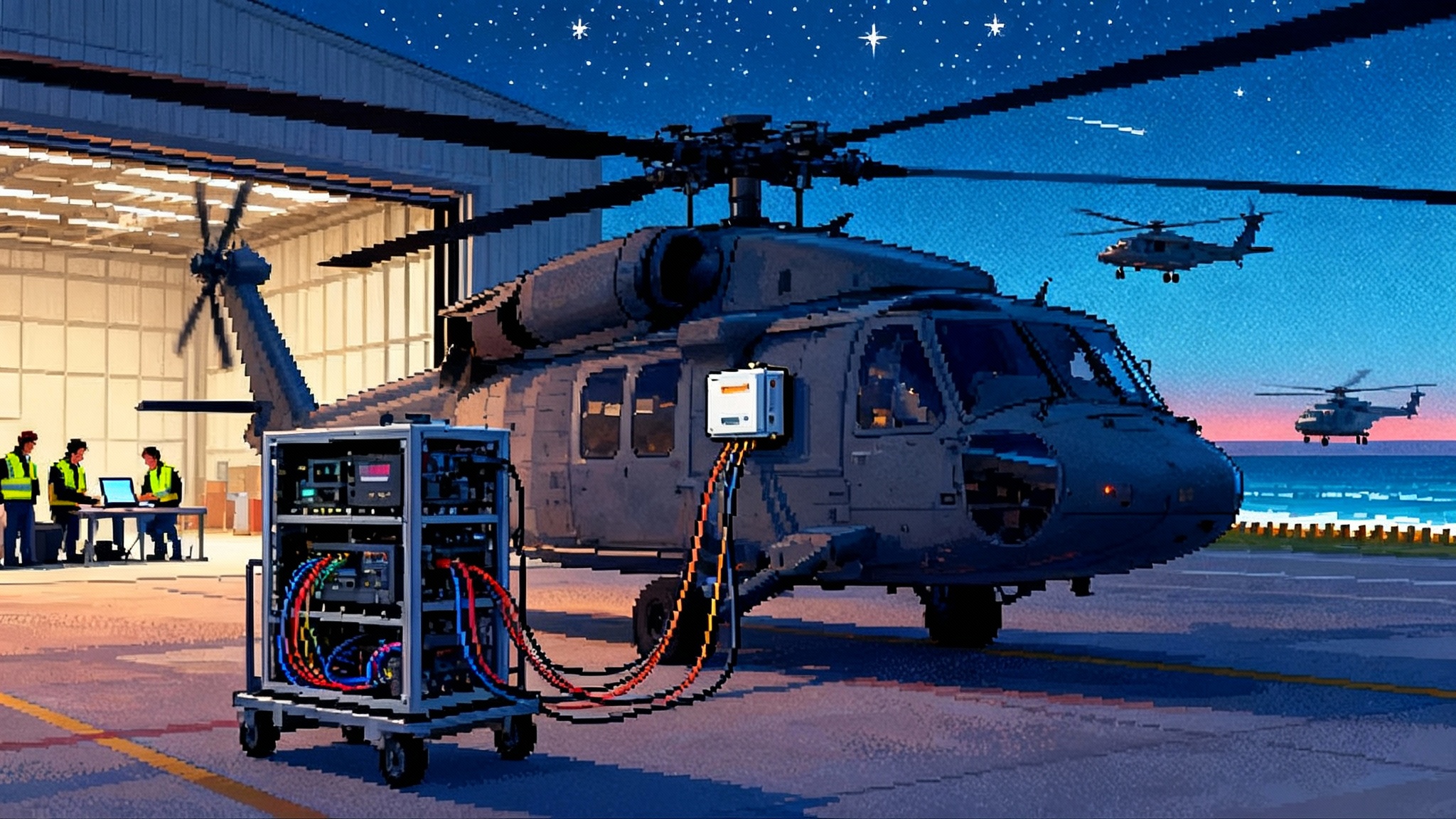
The breakthrough summer for GPS-proof navigation
A quiet revolution in positioning, navigation, and timing is now out in the open. In March 2025 the Defense Innovation Unit said it would begin field testing quantum sensors across five lines of effort, from inertial sensing to magnetic navigation. The announcement marked a shift from slide decks to hardware that would fly, float, and roll in real environments, not just vacuum tables and vibration-isolated racks. You can read the original DIU statement that spelled out those five lines of effort and planned field demos across air, ground, and maritime domains in DIU’s TQS field testing plan.
By late summer, the parallel push from the Defense Advanced Research Projects Agency went live. DARPA launched the Robust Quantum Sensors program to make quantum devices behave predictably on real platforms, with phase-one testing slated on a government helicopter and integration studies aimed at programs of record. The agency’s message was simple. Quantum sensors will survive aircraft vibration, electromagnetic noise, and temperature swings, not just lab chairs on casters. See the program kickoff in DARPA’s RoQS phase-one launch.
If you follow contested PNT, these are the inflection points that matter. They are accompanied by named performers, not just aspirations: Honeywell and Vector Atomic on CRUISE for quantum inertial sensors, Leidos on magnetic navigation with a quantum magnetometer supply chain that includes Frequency Electronics and MIT Lincoln Laboratory, and Lockheed Martin partnering with Q-CTRL and AOSense on a quantum-enabled inertial navigation system known as QuINS. In early October 2025, Safran Federal Systems joined the RoQS roster, signaling that Tier 1 inertial players are ready to make quantum practical.
What just moved from lab to flight line
Think of GPS as a lighthouse and inertial sensors as your ship’s dead-reckoning. When fog rolls in and the lighthouse vanishes, dead-reckoning is all you have. The problem is drift. Even excellent ring laser gyros and microelectromechanical accelerometers accumulate small errors that grow over time. Quantum sensors attack drift at the physics layer.
-
Quantum inertial measurement units: Cold-atom accelerometers and gyros measure motion by watching matter waves interfere. Because identical atoms act like standardized rulers, these instruments offer phenomenal stability. CRUISE, a DIU effort with Honeywell and Vector Atomic, aims to package that stability into a smaller, lighter, lower-power box that can ride on aircraft and maritime platforms. The target is not a science project. It is a line-replaceable unit that complements or outperforms today’s best inertial.
-
Magnetic navigation: The Earth’s crust produces subtle magnetic fingerprints. If you can measure the local field precisely, you can match it to a map and infer position without radio signals. That is MagNav. Leidos is maturing this method using quantum magnetometers built around nitrogen-vacancy centers in diamond. The physics gives you absolute measurements tied to constants of nature, which reduces long-term drift. Modern neural networks can subtract the airplane’s own magnetic noise, leaving the signal that matters: Earth.
-
Quantum-enabled INS: Lockheed Martin’s QuINS with Q-CTRL and AOSense combines quantum devices and classical sensors with control software that suppresses noise, stabilizes delicate quantum states, and hardens the package for flight. The recipe is straightforward in concept and hard in execution. Classical inertial handles high-rate dynamics. Quantum sensors provide bias stability and long-term accuracy. Sensor fusion blends them into one navigation solution.
-
Rugged quantum sensors: DARPA’s RoQS puts a stake in the ground. The agency will not accept sensors that only work on granite tables. Phase one puts prototypes on a helicopter, a brutal test environment full of vibration, gradients, and interference. If a sensor can hold performance there, it likely works on many platforms. Safran’s participation underscores an industry pivot from feasibility to manufacturability.
How these systems actually work, in plain terms
Picture a coffee cup sitting on the dashboard of a truck. When the truck accelerates, the coffee tilts and sloshes. An ordinary accelerometer watches the tilt of a microscopic mass to infer acceleration. A quantum accelerometer watches a cloud of atoms behave like ripples in a pond. Laser pulses split and recombine the matter waves, and the interference pattern shifts in proportion to acceleration. Because the atoms are identical and governed by clean physics, the device has superb repeatability and low bias drift.
MagNav is like following a trail of iron filings that only a very sensitive compass can see. The crust’s variations make that trail unique. A quantum magnetometer senses the vector field with picotesla-scale sensitivity by probing how defects in diamond or atomic vapors respond to magnetic energy. Combine that with aircraft-specific noise cancellation and a magnetic map, and you can localize without a satellite.
Both approaches give you a navigation backup that does not depend on a spoofable or jammable signal. That does not mean GPS goes away. It means the future is multi-sensor by design.
The hard parts that decide winners
These technologies are crossing from laboratory to flight test because teams are finally meeting four grinding requirements that have nothing to do with glossy pitch decks.
- Size, weight, and power
- Cold-atom sensors were historically the size of refrigerators and drank kilowatts. To make them fly, primes and startups are building chip-scale lasers, integrated photonics, compact vacuum systems, and efficient control electronics. The benchmark is simple. If a C-130 or maritime patrol aircraft can host it without major penalties, you are in the game. If a Group 5 unmanned aircraft can fly it for hours, you are winning. If a Group 3 drone can carry it without payload tradeoffs, you are rewriting the market.
- Calibration drift and bias stability
- Classical inertials drift over time; quantum devices target orders-of-magnitude better bias stability. But stability on paper is not stability in the field. Temperature swings, mounting stress, and platform electromagnetics can bend your performance. The most credible teams demonstrate long-duration runs and closed-loop navigation accuracy, not only pretty Allan deviation curves.
- Magnetic maps and model management
- MagNav only works if your map is good and your model knows how to subtract platform noise. That means curating magnetic databases, quantifying map confidence, and updating models as the Sun and human infrastructure change the environment. Expect a new discipline inside PNT offices that looks like a hybrid of geophysics and machine learning operations.
- Ruggedization and manufacturability
- The leap from hand-tuned breadboards to production-grade units is the graveyard of many promising quantum devices. RoQS is designed to sort the field by requiring performance on a helicopter. DIU’s TQS is pairing primes with component makers so the supply chain exists before the demo is done. Teams that can pass vibe, shock, humidity, and electromagnetic interference with margin will separate from the pack.
Near-term fielding paths by platform
Aircraft
-
Large transports and patrol aircraft are first in line. They have space, power, and mission profiles that benefit from long-duration drift suppression. Expect to see quantum-aided inertial ride alongside existing ring laser gyros and microelectromechanical units as a precision anchor during satellite outages. MagNav will ride in parallel, providing a second independent fix in magnetically rich corridors.
-
Tactical jets are harder. Space is tight and dynamics are fierce. Early adoption will be podded sensors for trials, not internal avionics. If RoQS performers can prove helicopter survivability, a path onto rotorcraft and tiltrotors opens quickly for degraded visual environments and brownout approaches where GPS is least reliable.
Unmanned aircraft systems
- Group 4 and 5 systems are prime targets. These aircraft can host quantum sensors with reasonable integration effort and gain resilience in contested airspace. As the USAF uncrewed fighters just flew, expect rapid experimentation with autonomy that assumes intermittent or denied GPS. For Group 2 and 3 drones, MagNav could show up first because quantum magnetometers are shrinking faster than cold-atom inertial. Expect hybrid solutions where classical inertial carries the load and the quantum magnetometer provides periodic absolute fixes.
Ships and submarines
- The maritime case is compelling. Quantum gravimeters and inertial sensors can enable gravity-aided and inertial-only navigation under sea where GPS is a rumor. Surface combatants can pair quantum inertial with celestial and signals-of-opportunity approaches to reduce topside radiation time. Our look at crewless warships are ready to scale shows how nav resilience unlocks autonomy at sea. The Navy’s interest inside TQS is a signal that maritime demonstrations are near-term.
Missiles and munitions
- Missiles have nasty constraints. They are small, hot, and vibratory. Quantum magnetometers that operate at ambient temperature could contribute sooner than cold-atom inertial, particularly for weapons that fly through magnetically mapped corridors. The long-term prize is a quantum-aided inertial that fits inside a guidance section without breaking the thermal budget. That is not a 2025 event, but the component work happening now makes a credible 2027 to 2029 horizon.
What to watch in the next 12 to 18 months
If you care about budgets and schedules, here are the milestones that will separate marketing from delivery.
-
DIU TQS flight demos complete: Look for reports that show closed-loop navigation accuracy on named platforms with and without GPS aiding. The strongest evidence will be long-duration sorties and maritime trials that demonstrate drift suppression in real weather, not indoor flights.
-
RoQS helicopter trials: This is the crucible for ruggedness. Sensors that hold performance on the helicopter are likely to survive integration on other platforms. Watch for performers that report endurance under rotor harmonics, electromagnetic transients, and temperature cycling.
-
Transition agreements with programs of record: The moment you see a memorandum that an Air Force or Navy program office will carry a quantum sensor through integration and test, you can start penciling a procurement tail. Without that, efforts remain science projects.
-
Supply chain maturation: Keep an eye on compact lasers, vacuum packages, and diamond magnetometer components moving from boutique to volume manufacturing. If those parts are still single-source by next year, schedules will slip.
-
Magnetic map products: Expect announcements about standardized formats, confidence layers, and update cadences for magnetic navigation. The winners will be the teams that treat maps like living software products, with versioning and machine learning pipelines, not static files.
-
Software-defined fusion: The strongest demos will show quantum sensors as a plug-in to existing mission computers, not a fragile one-off. Watch for adherence to open data standards so integrators can fuse quantum with classical inertial, visual odometry, celestial, and signals of opportunity.
Practical takeaways for decision makers
Program managers
- Fund dual-path demos that measure navigation accuracy over time on your platform of record. Do not accept only sensor-level metrics. Require end-to-end flight or sea trials with repeat runs and independent evaluation.
- Demand manufacturability plans. Ask for supplier lists and environmental qualification roadmaps before you greenlight integration.
Platform primes and avionics suppliers
- Build to an open interface now. If your mission computer can ingest quantum sensor data with time stamps and uncertainty, you can add modalities later without rewiring the airplane or ship.
- Prototype fusion early. Run classical inertial and quantum sensors in parallel and log everything. The datasets will be gold for improving filters and machine learning models.
Startups and component vendors
- Obsess over SWaP and calibration. Show watts per delta in drift and hours to stable operation after power-on. Prove repeatability across units.
- Engineer for noise. If your sensor survives a helicopter, it will likely survive most platforms. Design for vibration, radio-frequency interference, and thermal cycling from the beginning.
Operators and test squadrons
- Treat magnetic navigation like a new airway. Plan routes that sample magnetically diverse regions. Log aircraft noise signatures so your filters can learn faster.
- Practice degraded-mode procedures with quantum sensors in the loop. Build crew trust through training events where GPS is intentionally removed.
Why this resets the autonomy playbook
Autonomous systems live and die by their state estimate. If the navigation solution is stale or spoofed, autonomy gets brittle. Quantum inertial and MagNav provide independent truth sources that improve robustness when adversaries flood the air with jammers or when terrain and weather block cameras. In an era where LEO goes live for hypersonic defense, resilient navigation reduces reliance on external beacons across the force.
There is also a strategic effect. When platforms can navigate without emissions or external beacons, mission profiles open up. Aircraft can fly radio-silent legs. Submarines can remain submerged longer. Missiles can ride low without broadcasting. Adversaries that invested heavily in satellite denial will find a more resilient force in front of them.
The bottom line
In one summer and fall, quantum PNT moved from promising to proving. DIU’s TQS awards brought together primes and quantum specialists in teams built to field, not just publish. DARPA’s RoQS added a crucible that will sort science from product. Honeywell, Vector Atomic, Leidos, Lockheed Martin, Q-CTRL, AOSense, and Safran are not the only players, but their presence on funded teams signals that the center of gravity has shifted.
If you are tracking the path to programs of record, look for three signs in the next year. Flight reports that show closed-loop accuracy improvements under realistic conditions. Ruggedness proven on rotating machinery and in maritime environments. And integration plans that make quantum sensors a module in a larger PNT ecosystem, not a bespoke path.
A lighthouse is useful until the fog rolls in. With quantum inertial and magnetic navigation, we are building ships that can keep course in the fog.

